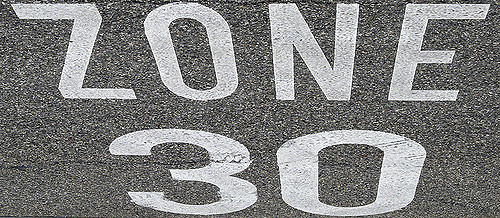
Image Credit: Oriolus
Let’s face it – negotiating is not an easy thing to do. There is all of the preparation that goes into it, there is the effort of actually doing it using all of our negotiation styles and negotiating techniques, and then, with a little luck, there will be a deal that both sides will agree to when it’s all over. Unfortunately it can be all too easy for us to do one of the two things that we really should not do: reach a deal with the other side when we really should not or walk away from a deal that we should have agreed to. In order to prevent this from occurring we need to take the time to prepare for each negotiation and, as a part of doing this, take the time to analyze the zone of possible agreement (ZOPA) for this negotiation.
Stay Away From The Bad Agreement
When we enter into a negotiation, our goal from the start is to be able to reach a deal with the other side. This can lead us to have a singular focus during the negotiation – we want to reach that deal. This can cause a significant problem for us. There is the possibility that we could end up agreeing to a deal that is not in our best interest. The deal that we agree to could be actually worse for us than our best alternative to a negotiated agreement (BATNA). A much better deal might be available to us somewhere else.
There are a number of different reasons why we could make this mistake. The first is that the other side could hide things from us during the course of the negotiation that would reveal to us that a deal would not be in our own best interests. Another reason that could occur is that we are unwilling to walk away from a deal that is not in our best interest because we believe that we’ve invested so much time, energy, and effort into reaching a deal that we have to be successful. The fancy name for this kind of behavior is “escalation of commitment”. Finally, we may be trying to build a relationship with the other side of the table and this may prevent us from walking away from the negotiations.
There Is No Fixed Pie
If there is anything that can cause us to wake up in the middle of the night covered in sweat it is the thought of the negotiation deal that got away from us. As negotiators, there are times that the deal that we could reach with the other side would be better than any deal that we could reach with anyone else (better than our BATNA). However, instead of striking the deal, we instead end up walking away from the negotiating table.
People who study such situations have come up with a reason that we do this. They call it the “mythical fixed pie of negotiation”. What this means is that when we are starting a negotiation we do so with the assumption that the pie of resources that will be negotiated is fixed. This is a mindset that leads us to interpret most competitive situations as purely win-lose. Thus, if we don’t think that we are winning, then we’ll walk away. It turns out that in most business negotiations, many more issues than price are involved. These can include items such as service, delivery, bonuses, financing, timing, and relationships. We can fall victim to the mythical fixed pie mindset when we fail to recognize that we have the ability to make tradeoffs across issues. All that has to happen is one party compromises on an issue they value less in exchange for a concession from the other side on an issue they value more.
ZOPA And It’s Best Friend BATNA
So how can negotiators prevent these kinds of deal killing mistakes to happen? The answer to this question is that we need to start things off correctly by thoroughly preparing for the negotiation, including reaching an accurate understanding of the ZOPA.
The way that you are going to want to do your ZOPA analysis is to begin with a consideration of your best alternative to a negotiated agreement, or BATNA. Your BATNA is the course of action you would take if you do not reach agreement in the current negotiation. Your BATNA is really the only standard which can protect you both from accepting terms that are too unfavorable and from rejecting terms it would not be in your interest to accept.
This is not all that you are going to have to do. Additionally, you’ll need to analyze the other party’s BATNA. By taking a look at the other party’s alternatives—whether through research or by asking them questions directly—you can gain a realistic sense of what to expect from the negotiation. If there is a set of resolutions that both parties would prefer over impasse, then a ZOPA exists, and it would be optimal for you to reach a settlement. If, by contrast, there is no overlap between both sides reservation points then no ZOPA exists, and both sides would be better off pursuing their BATNAs. By taking the time to analyze your ZOPA in a negotiation, you will be better equipped to avoid the two traps of reaching agreement for agreement’s sake and viewing the negotiation as a pie to be divided.
What All Of This Means For You
The deal is why we take the time to engage in a principled negotiation in the first place. All too often our focus is on the goal and what we hope to be able to accomplish by reaching an agreement with the other side. However, there are two very bad things that can happen when we do this. The first is that we accept a deal that we should never have signed up for. The other is the opposite – we walk away from a deal that is better than anything else that we’re going to be able to work out with anyone else.
One of the common reasons that we might accept a deal that is not in our own best interests is because of something called the “escalation of commitment”. This occurs when we’ve invested a lot of time and effort into a negotiation and we don’t want to see ourselves throwing all of that away. Likewise, the “mythical fixed pie of negotiation” can lead us to view our next negotiation as being a win / lose proposition and can cause us to walk away from a deal that would have been good for us. To avoid this happening to us, we need to do our homework and determine both our BATNA and ZOPA before the negotiation starts. Only by knowing both of these will we know if the negotiation that we are engaged in will turn out to be a good deal for us.
As is always, the key to any successful negotiation is for us to do our homework before the negotiations start. If we want to avoid the twin failures of accepting bad deals and walking away from good deals, then we need to make sure that we fully understand both what our BATNA is going to be and where the ZOPA that we can live with is for this negotiation. If we go into the negotiations knowing these pieces of information, then we’ll be in a good position to get a deal that we can really live with.
– Dr. Jim Anderson
Blue Elephant Consulting –
Your Source For Real World Negotiating Skills™
Question For You: If you are thinking about walking away from a negotiation, is there any way to tell is this would be a good deal for you?
![]() Click here to get automatic updates when The Accidental Negotiator Blog is updated.
Click here to get automatic updates when The Accidental Negotiator Blog is updated.
P.S.: Free subscriptions to The Accidental Negotiator Newsletter are now available. Learn what you need to know to do the job. Subscribe now: Click Here!
What We’ll Be Talking About Next Time
If ever there was a fundamental question in negotiation, it would probably not be which negotiation styles or negotiating techniques to use, but rather it would have to be the classic “should I make the first offer or wait for the other side to make the first offer” question. For the longest time, the thinking went that we should sit back and allow the other side to make the first offer. The reason for this was so that we could learn valuable information based on what they asked for. However, negotiating research has shown that the cost of waiting for the other side to make an offer far outweighs the benefits of us making the first offer. Looks like we’ve got some research to do…

